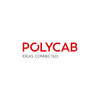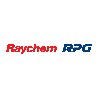Filter interviews by
C&S Electric Production DET Interview Questions and Answers
C&S Electric Production DET Interview Experiences
1 interview found
I applied via Naukri.com and was interviewed in Apr 2023. There were 2 interview rounds.

(3 Questions)
- Q1. What do you know about electronics?
- Ans.
I have knowledge of electronics and its applications in various fields.
I have studied basic electronics in my academic curriculum.
I am familiar with electronic components such as resistors, capacitors, transistors, and diodes.
I have practical experience in designing and building simple electronic circuits.
I understand the principles of digital electronics and have worked with logic gates and flip-flops.
I am aware of th...
- Q2. What do you want to be in next 5years?
- Ans.
In the next 5 years, I want to become a highly skilled and experienced production DET.
I aim to gain expertise in all aspects of production DET, including planning, scheduling, and quality control.
I plan to take on more challenging projects and responsibilities to further develop my skills.
I will actively seek opportunities for professional growth, such as attending workshops and obtaining relevant certifications.
I aspi...
- Q3. What is your hobbies?
- Ans.
My hobbies include playing guitar, hiking, and cooking.
Playing guitar: I have been playing guitar for 10 years and enjoy learning new songs and techniques.
Hiking: I love exploring nature and challenging myself with different hiking trails.
Cooking: I find joy in experimenting with new recipes and creating delicious meals for my friends and family.
Interview Preparation Tips
Top trending discussions






Interview questions from similar companies

I applied via Walk-in and was interviewed in Jul 2023. There were 3 interview rounds.

Wiring Haress experience in 1 year
(2 Questions)
- Q1. Knowledge of wrong Harness
- Q2. No problem for interview

Interview Questionnaire
3 Questions
- Q1. About Brazing process.
- Q2. Line balancing
- Q3. Man power handling

Interview Questionnaire
1 Question
- Q1. About job profile, quality core tools in depth, problems solving techniques, quality circles projects in last company, best Kaizen in last company

Application of aptitude
(1 Question)
- Q1. Salary per annum
Interview Preparation Tips

I applied via Approached by Company and was interviewed before Aug 2022. There were 4 interview rounds.

Regarding market analysis about Wire and cable
(1 Question)
- Q1. Regarding salary negotiation and past company profiles.
(4 Questions)
- Q1. How many type of insulation in house wire.
- Ans.
There are mainly two types of insulation in house wire: thermoplastic and thermosetting.
Thermoplastic insulation is flexible and can be easily molded. Examples include PVC and polyethylene.
Thermosetting insulation is rigid and cannot be reshaped once set. Examples include cross-linked polyethylene and rubber.
- Q2. What is XLPE insulation
- Ans.
XLPE insulation is a type of insulation material used in cables and wires for its excellent electrical properties and thermal stability.
XLPE stands for cross-linked polyethylene
It has high dielectric strength, making it suitable for high voltage applications
XLPE insulation is resistant to moisture, chemicals, and abrasion
It is commonly used in power cables, control cables, and communication cables
- Q3. Describe about wire construction.
- Ans.
Wire construction refers to the process of creating wires by twisting or braiding together strands of metal or other materials.
Wires are typically made by twisting together strands of metal such as copper, aluminum, or steel.
The number of strands and the thickness of the wire can vary depending on the intended use.
Wire construction can also involve braiding strands together for added strength and flexibility.
Different ...
- Q4. What is LT/HT cable.
- Ans.
LT/HT cables are types of electrical cables used for low voltage and high voltage applications.
LT cable stands for Low Tension cable, used for voltages up to 1100V.
HT cable stands for High Tension cable, used for voltages above 1100V.
LT cables are commonly used in residential and commercial buildings for power distribution.
HT cables are used for transmitting electricity over long distances or in industrial settings.
Bot...
Interview Preparation Tips
- Wire and cable
- Competitive Market Analysis

(1 Question)
- Q1. Moment and shear force diagram
- Ans.
Moment and shear force diagrams are graphical representations of the internal forces acting on a structural element.
Moment diagram shows the variation of bending moment along the length of the beam.
Shear force diagram shows the variation of shear force along the length of the beam.
Both diagrams are essential for designing and analyzing structures.
They help in determining the maximum bending moment and shear force that ...
Interview Preparation Tips

(2 Questions)
- Q1. Tell me about yourself
- Ans.
Experienced production engineer with a background in mechanical engineering and a passion for optimizing manufacturing processes.
Graduated with a degree in Mechanical Engineering
Worked for 5 years in the manufacturing industry
Implemented lean manufacturing principles to improve production efficiency
Led a team in reducing production costs by 15% through process optimization
- Q2. What is knocking?
- Ans.
Knocking is an abnormal combustion phenomenon in internal combustion engines.
Knocking occurs when the air-fuel mixture in the engine's cylinders ignites prematurely or unevenly.
It produces a knocking or pinging sound, which can cause damage to the engine if not addressed.
Factors contributing to knocking include low octane fuel, high engine temperatures, and incorrect ignition timing.
Interview Preparation Tips

(2 Questions)
- Q1. What is oracle database and uses
- Q2. What is memory and storage

Interview Questionnaire
1 Question
- Q1. How we can increase efficiency of boiler ?
- Ans.
Efficiency of a boiler can be increased by improving insulation, optimizing combustion, and regular maintenance.
Improve insulation to reduce heat loss
Optimize combustion by adjusting air-to-fuel ratio and using efficient burners
Regular maintenance to clean and repair components
Use economizers to recover waste heat
Upgrade to high-efficiency boilers
Implement energy management systems to monitor and control boiler operati
C&S Electric Interview FAQs
Tell us how to improve this page.
C&S Electric Interviews By Designations
- C&S Electric Production Engineer Interview Questions
- C&S Electric Design Engineer Interview Questions
- C&S Electric Quality Engineer Interview Questions
- C&S Electric Area Sales Manager Interview Questions
- C&S Electric Assistant Sales Manager Interview Questions
- C&S Electric Engineer Interview Questions
- C&S Electric Senior Engineer Interview Questions
- C&S Electric Manager Interview Questions
- Show more
Interview Questions for Popular Designations
- Production Engineer Interview Questions
- Production Supervisor Interview Questions
- Production Manager Interview Questions
- Production Officer Interview Questions
- Executive Production Interview Questions
- Production Interview Questions
- Senior Production Engineer Interview Questions
- Production Graduate Engineer Trainee Interview Questions
- Show more
C&S Electric Production DET Interview Process
based on 1 interview
Interview experience
Interview Questions from Similar Companies
|
Assistant Manager
216
salaries
| ₹3.3 L/yr - ₹11 L/yr |
|
Senior Engineer
155
salaries
| ₹2.8 L/yr - ₹7.2 L/yr |
|
Engineer
99
salaries
| ₹2 L/yr - ₹5.8 L/yr |
|
Deputy Manager
83
salaries
| ₹5 L/yr - ₹12.8 L/yr |
|
Design Engineer
77
salaries
| ₹2.5 L/yr - ₹7.2 L/yr |

Havells

Polycab Wires

BHEL

Amphenol Interconnect
- Home >
- Interviews >
- C&S Electric Interview Questions >
- C&S Electric Production DET Interview Questions












